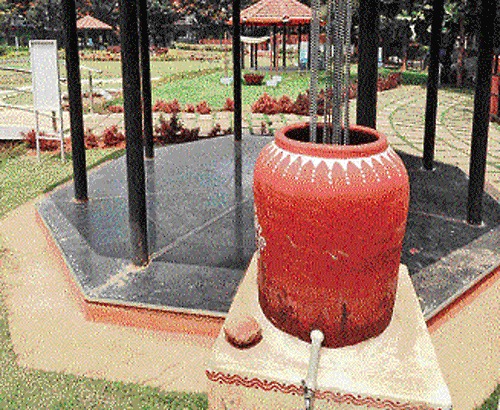
Rainwater harvesting (RWH) is yet to attain success in the City, although the Bangalore Water Supply and Sewerage Board (BWSSB) has made it mandatory in accordance with law.
The threat of disconnecting water supply has also failed to make people instal RWH in their buildings.
The BWSSB Act was amended in 2009 and 2011 to make RWH mandatory for all new units measuring above 1,200 sq ft and all old units measuring 2,400 sq ft. The BWSSB supplies water to seven lakh units in Bangalore.
According to a survey conducted by the BWSSB in 2009, only 49,265 units (independent homes, commercial and residential units) of the 60,000-odd units measuring above 1,200 sq ft in core areas have RWH.
“We have not been able to enforce the law. Earlier we would cut water supply to about 100 units. While consumers did not bother, their neighbours instead complained of sewage overflowing and water contamination. We were forced to repair pipelines and restore water supply,” a BWSSB official told Deccan Herald on the condition of anonymity.
On the other hand, many senior citizens reason that they cannot do repairs in the absence of their children who live abroad.
Some consumers cite space and financial constraints. Many apartments in erstwhile CMC and TMC areas have not installed RWH, saying they do not have Cauvery water connection.
The BWSSB chairman, M S Ravishankar, admitted that the board had not been able to disconnect water supply in case of non-compliers. “We only request people to instal RWH, and in case of new establishments, we issue NOC only when RWH is implemented. Plans are on to strictly implement RWH after the Lok Sabha elections.”
A survey by the IISc and the Karnataka State Council for Science and Technology in 2012 revealed that only 70,000 units have RWH. The survey was based on family size, plot size, roof size and type of RWH.
Under family size, 30 per cent of apartments, 28 per cent of families with 3-5 members, 19 per cent of families with 5-8 members, eight per cent of families with three-member families, nine per cent of families with less than three members and 65 per cent of families with 10 members have RWH.
Based on plot size, 61 per cent of units measuring 40x60 sq ft, 18 per cent of odd-sized units like 30x80 sq ft, eight per cent of 50x80 sq ft, six per cent of 30x40 sq ft and five per cent of big plots like 50x100 or 80x100 sq ft have RWH.
Under rooftop, 52 per cent of roofs measuring 100-1,000 sq ft, 23 per cent of 2,000-3,000 sq ft, 19 per cent of 3,000-4,000 sq ft and six per cent of roofs below 1,000 sq ft have RWH.
Based on RWH type, 47 per cent have cement-ringed wells, 25 per cent built sumps and 10 per cent used plastic tanks.